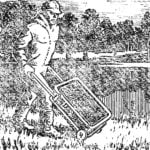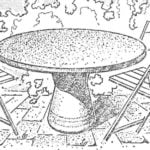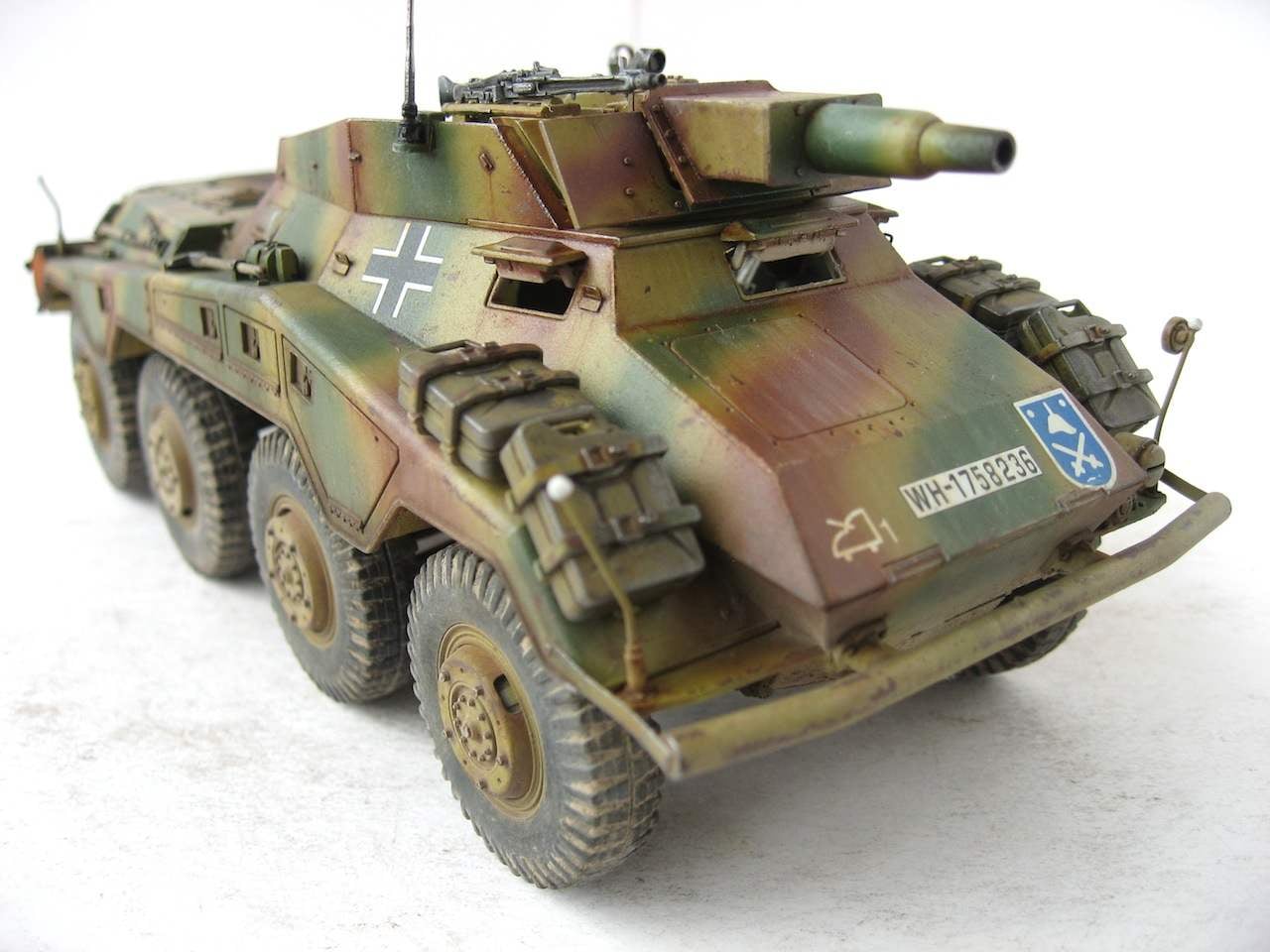The machine had two control – front and rear. Front driver located in a seat in the center of the machine. Before him was the steering wheel on the steering column, levers, gear shift and dual were right, the dashboard on the left. On the sides were placed the boxes of batteries and spare parts.
The driver’s view was supported by three observation Windows with layered glass in front of the driver and two left and right side walls of the housing. In combat they closed the armor-lids with holes. In the upper part of the front plate housed the emergency escape hatch.
The rear control was used to drive in reverse without any prior reversal of the armored car. The driver, who was in this position, could drive a car by watching the road through the window in the stern and the other on the left side. Both sides from its seat in case there were two weekends of the hatch.
In the aft engine-transmission compartment housed a 210-HP high-efficiency diesel engine “Tatra 103”, developed by the Czech eponymous firm, 12-cylinder, V-shaped, providing high specific power. Its working volume – 14 825 cm3, the camber angle of the cylinders is 75°. Engine cooling air is a priority for the use of the armored car in a hot climate and arid desert. However, the developers had to put two fans, which ensured the normal thermal mode of the engine.
In the roof of the compartment had blinds ventilation, on either side of which houses service hatches of the motor. In addition, in its rear part had additional ventilation hatch.
Mufflers removed on the sides for the wings of the car.
Sd.Kfz.234/4
Armored Car Sd.Kfz.234/4 with an anti-tank gun Pak 40
Torque to the wheels from the engine was transmitted via a three-speed gearbox with preselector control, which created the possibility of movement both forward and backward in the six speeds.
The chassis of the armored car – a four-wheel-drive with all the steered wheels. Each of them is attached to the body on the beams, the vertical stroke which was depreciated independent semi-elliptic leaf springs. The wheels have air brakes and was shed with low-pressure tyres and self-sealing rubber.
The connection was performed through radio Pu Spr Ger “f” with a range of on-the-go about 1 km and parked up to 3 km. Whip antenna was mounted in the rear of the turret.
A model of the armored vehicle was adopted by the Wehrmacht in 1943 under the symbol Sd.Kfz.234/1. The machine was considered a reconnaissance and was armed reconnaissance battalions of the armored and motorized divisions.
All the Bussing-NAG from September 1943 to March 1945, produced 200 of these vehicles.
However, to combat armored vehicles by the allies by 1943 were defending is already much more powerful armor, it was necessary heavy armored vehicles with reinforced arms. The German designers have offered to use on Sd.Kfz.231 50-mm gun, standing earlier a 20-ton medium tank Pz.Kpfw III. These machines are mass produced from 1938, but by that time it had been discontinued; only a few even fought on the front.
Their gun KwK 39/1 L/60 long-barreled with a barrel length of 60 calibres and could penetrate the sub-caliber projectile I’m 40 at a distance of 500 m armor thickness 57 mm at an angle meeting of 60°, and at twice the range is 44 mm. It was possible quite deal effectively with our T-70 and T-34, which, we will remind, 45-mm frontal and side armor.
Gun, intended for reconnaissance tank VK 1602 Leopard was placed in a welded oval-shaped tower, designed by the firm “Daimler-Benz”. The tower had frontal armor thickness of 30 mm and ramps – 14.5 mm, the thickness of the mask is 100 mm. on the right side of the gun mounted coaxial 7.92-mm machine gun MG42. On the sides of the set of three smoke grenade launchers. To reduce the rollback gun was supplied with a muzzle brake.
For communication, the crew used two radio stations. One of them is a Ger Fu 12 Se – had the usual two-meter whip antenna on the tower, the other Ar Spr Ger “a” antenna with a “whisk” that were left in the hull rear.
This modification of the index had Sd.Kfz.234/2. It was produced from September 1943 to September 1944 – and produced 101 unit. Thanks firepower, maneuverability, survivability of this machine, called “Puma” is considered the best heavy armor vehicle of the Second world war.
Strengthened firepower of the armored car statement on a 75-mm short-barreled gun. Place rotating tower took a low fixed superstructure with no roof, in which were cannon and machine gun МG42. She could only direct the left and right sector 25°.
Basic data of the German armored
These cars had an index of “234/3”. From June to December 1944 they produced 88 units.
The following modification of the Sd.Kfz.234/4 already could be considered a self-propelled anti-tank installation because its open on top of the wheelhouse posted serial cannon Cancer 40, which just took off the wheels, but left with her shield. There was in the wheelhouse and gun MG 42. Sector of fire remained the same as in the previous model, and 25°. To restore used sight
3×8. Ammunition tinkered very small – 12 shots and 1950 rounds. By March of 1945 he produced 89 of these machines.
From September 1943 to March 1945, produced about 500 armored cars Sd.Kfz.234 all modifications. However, despite its relatively small circulation, they used the troops of the Wehrmacht very popular. In fact, they have identified areas for further development vosmiklasnica war machines, laying the foundations of creation and the current models.
V. TALANOV
Recommend to read
 “DIPLOMAT” FOR INFLATABLE
“DIPLOMAT” FOR INFLATABLE
Free time, whether it is a holiday or weekend, we as a family try to spend Hiking: Hiking and Biking, road and water. Visited the Baltic States, Karelia, the Crimea, the Caucasus, in the... GARDEN TABLE
GARDEN TABLE
Two plastic pails, metal tube, sheet particle Board or boards required for the manufacture of a simple table for a garden plot. To the table is not overturned, the bottom of the bucket...
 Under the Versailles peace Treaty, Germany until the early 1930s did not produce armored vehicles, and only in 1932 the firm “Daimler-Benz” has started the production for the army of light biaxial armored car Kfz. 13 and Kfz. 14 machine – gun and communication, weighing just over 2 tons They were created on the chassis of the machine, “Adler DDG” (Adler 3Gd) engine 60 HP, had an open top body of the 8-mm plates and armed with a 7.92 mm MG13 machine guns mounted in the middle of the body behind armored shields. Their crew consisted of two or three people.
Under the Versailles peace Treaty, Germany until the early 1930s did not produce armored vehicles, and only in 1932 the firm “Daimler-Benz” has started the production for the army of light biaxial armored car Kfz. 13 and Kfz. 14 machine – gun and communication, weighing just over 2 tons They were created on the chassis of the machine, “Adler DDG” (Adler 3Gd) engine 60 HP, had an open top body of the 8-mm plates and armed with a 7.92 mm MG13 machine guns mounted in the middle of the body behind armored shields. Their crew consisted of two or three people.